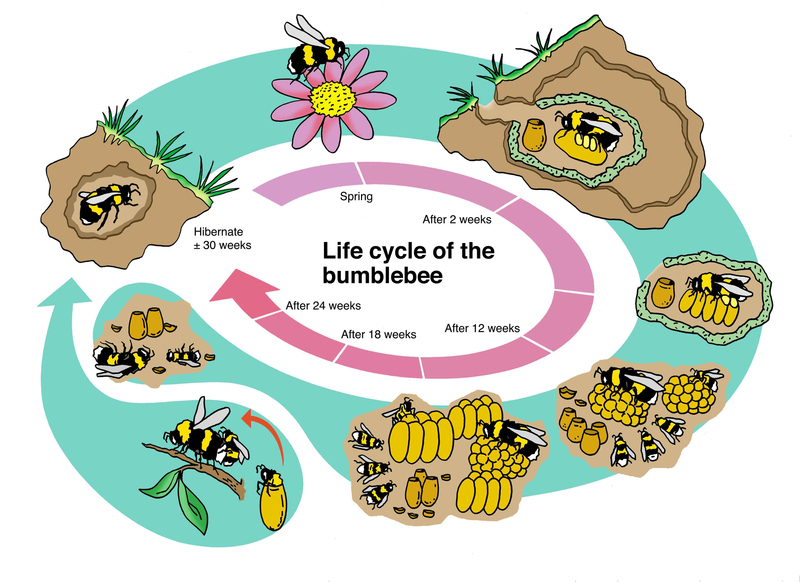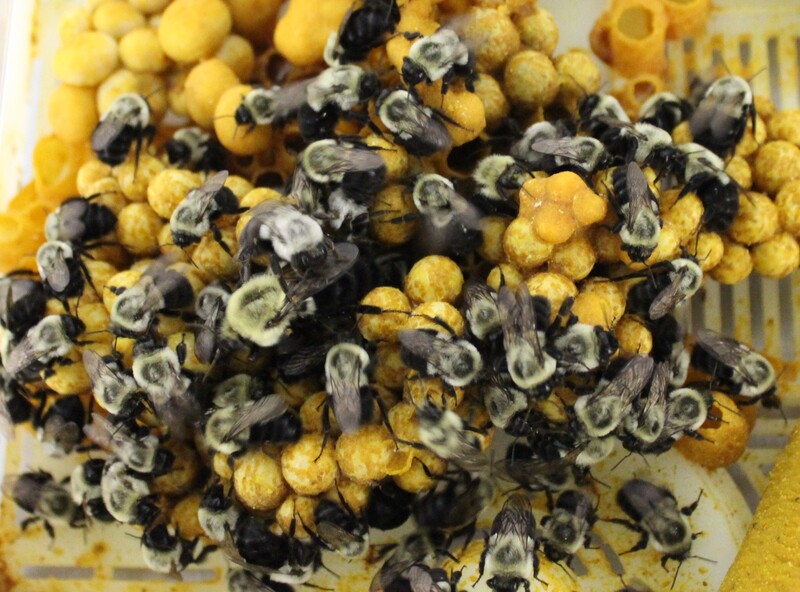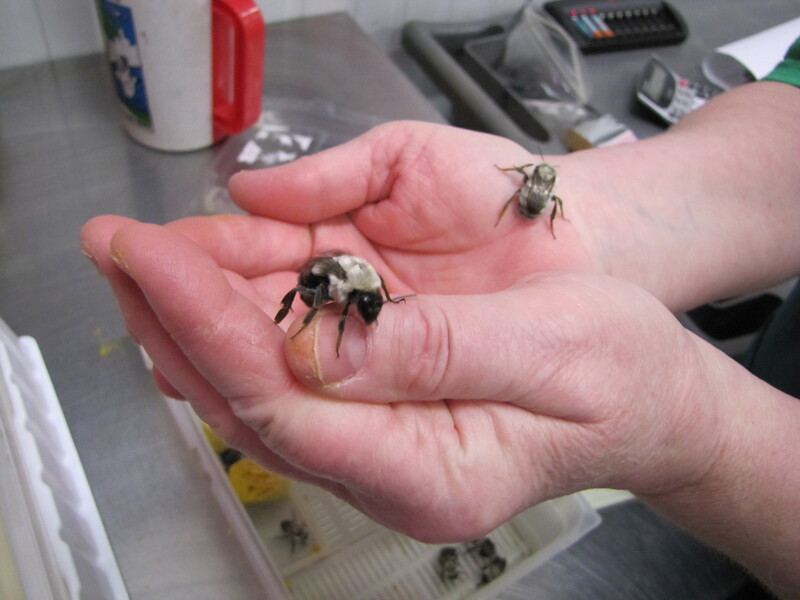What is the difference between honeybees and bumblebees?
In terms of their strong natural pollination qualities, bumblebees and honeybees complement each other well. The main difference with honeybees is that bumblebees fly in substandard weather conditions. For example: temperatures lower than 55°F in light rain, cloudy or foggy conditions and wind speeds higher than 15mph. Bumblebees also fly better in conditions with poor light (for example, high tunnels/hoop houses, shade cloth and hail netting) and they fly around your crop in a more criss cross fashion.

What is the life cycle of the bumblebee and will they return next season?
A queen bumblebee hibernates alone and underground throughout the winter season. Before hibernation, a new queen will leave the nest and mate, with a drone. As temperatures rise and the spring season emerges, the new queen bumblebee awakens. She will start forging for pollen and nectar, as well as search for a suitable nest site. Once a nest is chosen, she will start laying eggs to build her own colony. Approximately 4 weeks after the first eggs are laid, the first worker bumblebees (all females) start emerging and carry out work both inside and outside the nest. Worker bees forage for both pollen and nectar to provide resources for brood as well as maintaining the nest. As the nest continues to develop the Queen will not leave the nest, she will remain inside the nest, continuing to lay eggs and providing orders for “workers”. In late summer the Queen will start producing new queen and males (drones) in order for the colony to reproduce. These new queens will mate with males, leave the nest and the cycle will continue. The old queen and her nest will decline naturally in late autumn.
Do bumblebees produce honey?
No. Although bumblebees store nectar like honeybees, they do not have to save enough nectar to survive the winter (since the queens hibernate alone during winter). Moreover, bumblebees do not use an organized nest structure like honeybees, so separating the honey pots from the larva/eggs/pollen would be very difficult.

Do bumblebees suffer from Colony Collapse Disorder too?
No, Colony Collapse Disorder (CCD) is the name given to the mysterious disappearance of many honeybee colonies. Although the exact causes are unclear, it appears that a combination of parasites and pesticides may be to blame. As the entire honeybee colony survives the winter, honeybees are particularly sensitive to these. In the case of bumblebees, only the queen hibernates and survives the winter. Bumblebees are therefore not affected by CCD.

Do bumblebees sting and if so, do they die after?
Although bumblebees DO sting, they only do this in self-defense and almost exclusively when you’re near their hive or when you restrict their movement (e.g. when you step on them or try to hold them in your hand). Unlike honeybee stings, bumblebees do not leave their venom sac in their victim and will live on after they sting. Bumblebees are generally regarded as less aggressive than honeybees or wasps.
Can bumblebees be used along with honeybees?
Bumblebees and honeybees can be used together with caution. Koppert hives contain bags with a small volume of sugar water solution, which can attract honeybees, especially when food resources are low. If honeybees begin raiding the hives in large numbers, the health and longevity of the hives can be jeopardized. When using bumblebees and honeybees together, Koppert recommends separating the two bees by a minimum of 100 yards. It can be advised to either introduce honeybees or bumblebees at staggered introduction rates, please consult your local Koppert representative for any further recommendations or questions about introductions.
Are bumblebees affected by chemical applications?
Bumblebees are just as sensitive to chemicals as honeybees. To determine the appropriate action when spraying chemicals, visit our Side Effects Database or contact your local Koppert representative.
Are wild animals attracted to hives?
The sugar water and pollen in the hives can attract other insects and animals. Most insects attracted to the hives are generally a nuisance, and do not affect the viability of the bees. Animals, such as bears, can pose a more serious threat. If bears are present, it is recommended that agricultural electrical fencing is placed around the Quad units.